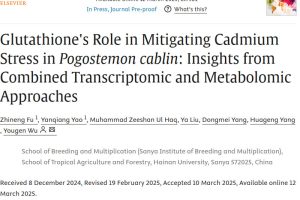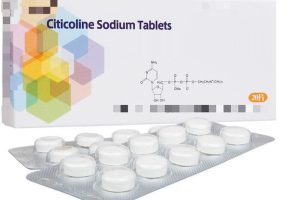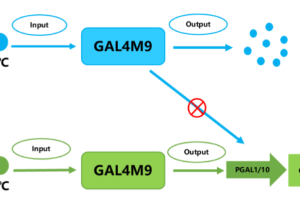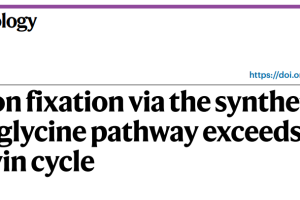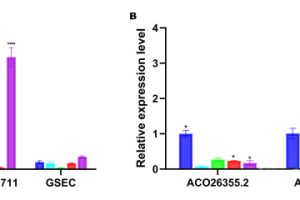In the era of great health, people’s pursuit of health is becoming more and more intense, a variety of new types of nutritional supplements to repair cells continue to emerge, there is a magical substance PQQ has also begun to enter the public’s vision, opening a new paradigm of nutrition and health care, and has become a dark horse of no problem in the era of great health.
What is PQQ?
PQQ, pyrroloquinoline quinone, methoxatin, this tech-sounding name, is actually the 14th vitamin recognized by the world’s medical community, found in fruits, vegetables, grains and other common foods, including plant foods and animal foods, but its concentration is very low, Only the total content of PQQ and its derivative IPQ in human milk is 140-180 ng/ml (nanograms /ml), suggesting that it plays a very important role in the growth and development of newborn infants.
The actual “quantity” of PQQ in nature is very rare, and the degree of rarity is amazing! It has been reported that the highest international price per gram of PQQ reached $39,000, which is more than 3,000 times that of gold. Is it heroic? Because it is the treasure of protecting health!
Authoritative reports and views on PQQ:
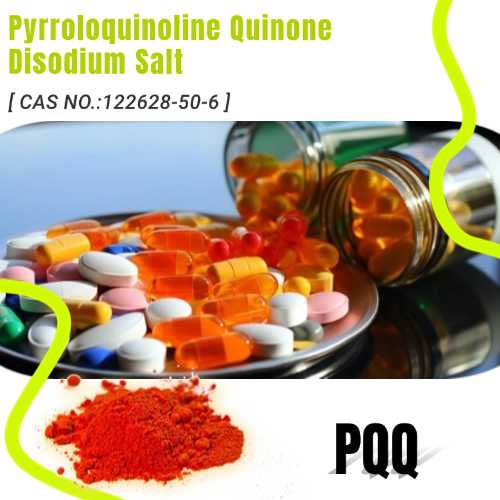
1. “Immortality” elixir, the Chinese Academy of Sciences found that the active ingredient is PQQ
According to the Records of the Shihuang of Qin: After Qin Shihuang unified the six States, he heard that there was an immortal medicine in the East, and after eating it, he went to the famous doctor Xu Fu and ordered him to find the immortal medicine.
This fairy medicine is Taisui meat Ganoderma lucidum, and modern research has found that the active ingredient is PQQ.
Academician of the Chinese Academy of Sciences Wu Jiping, Shi Xuemin and other experts found that the main component of “Taisui” is PQQ, which is used for the treatment of difficult diseases such as immunity regulation and cancer, and the effect is very obvious, so it is called “biological and Shi Bi”.
2. Frankfurter Allgemeine Zeitung PQQ helped create life on Earth
On June 17, 2004, the Frankfurter Allgemeine Zeitung reported that scientists found PQQ in the dust of comet Wilder 2 with the help of a new spectrometer installed on the US Stardust probe.
Scientists speculate that PQQ and many other molecules arrived on Earth in comet dust billions of years ago, where they helped create the genetic building blocks of compounds containing nitrogen and carbon.
Life could have arisen as a result of a combination of water and other factors, and PQQ itself could have been created from molecules present on the surface of mineral particles under the action of cosmic rays.
The discovery lends further support to the idea that molecules such as PQQ helped create life on Earth.
3. The PQQ content in human milk is as high as 140-180 ng/ml
American researchers found that the PQQ content in human milk was as high as 140-180 nanograms/ml.
After millions of years of long-term evolution, humans have developed a set of efficient operating mechanisms to adapt to the environment.
Every physiological process has its necessity and rationality.
The high concentration of PQQ in the mother’s milk suggests that the substance may play an important role in the growth and development of newborn infants.
At present, it is believed that the intestinal flora of animals and humans cannot synthesize PQQ or the amount of synthesis is far from meeting the needs of the body, and the PQQ in their bodies is mainly obtained through diet, and it is best to choose exogenous supplementation to obtain PQQ.

PQQ (Pyrroloquinoline quinone) is a new coenzyme of oxidoreductase discovered in the late 1970s, and the third super coenzyme discovered after flavin nucleotide (FMN, FAD) and niacinamide nucleotide (MAD, NADP).
In the 1860s, a special class of dehydrogenases was discovered whose activity depended not on nicotinamide nucleotides or flavin nucleotides but on a new coenzyme.
In 1979 Durin identified this cogroup as PQQ.
In 2003, the RIKEN Institute of Japan wrote in Nature that:
PQQ has important physiological functions such as anti-oxidation, anti-aging, anti-virus, anti-inflammation, promoting mitochondrial energy generation, promoting nerve growth factor synthesis, preventing liver damage and improving immunity.
PQQ has a certain application prospect in medicine.
5. PQQ can delay the degeneration of the intervertebral disc caused by natural aging, and it is expected to straighten the backs of 80-year-old people
On June 26, 2023, Miao Dengshun and Yang Renlei from the Central Laboratory of Friendship Orthopedic Surgery Hospital of Nanjing Medical University published their research results in Aging Cell,
which revealed the potential mechanism of PQQ antioxidant activity and clarified the effectiveness and specific mechanism of PQQ in the prevention and treatment of senile osteoporosis.
It provides the experimental basis for PQQ as a food additive for preventing and treating senile osteoporosis and enhancing bone health.
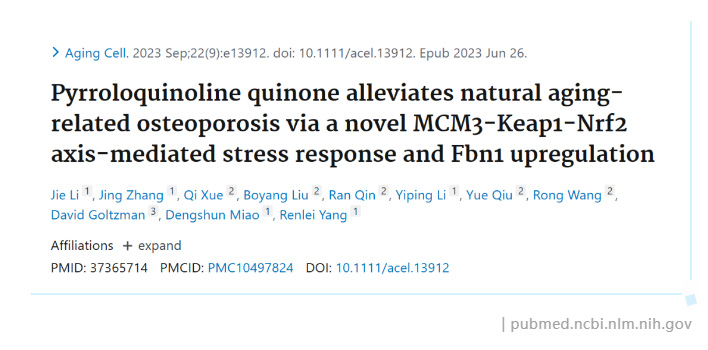
In fact, since its discovery in 1979, PQQ has received a great deal of attention in nutrition and pharmacology.
Since 2012, PQQ as a new food raw material has successively passed the NDI and GRAS of the US FDA, the EFSA of the EU and the new food raw material approval of the Domestic Health Commission, and can be used as an additive in energy drinks, sports drinks, electrolyte drinks and bottled water, etc. The European Union approved the use as a dietary supplement or natural health food additive.
This also shows the recognition of the safety and efficacy of PQQ by national food regulatory authorities.
PQQ naturally exists in a variety of foods such as milk, eggs, spinach, etc., but its content is usually trace, generally need to be artificially extracted or synthesized, and supplemented in the form of nutritional supplements, health products or functional foods, in order to ensure the intake of sufficient doses to play its health effects.
Compared with the introduction of raw materials in the two approval announcements of PQQ, the main reason is that its production process is different.
The process approved in 2022 is chemical synthesis, that is, 6-amino-5-methoxy-1H-indole-2-antelope ethyl ester and 2-oxopentenediate dimethyl ester as raw materials, through coupling ring reaction, quinoline ring formation, oxidation reaction, ester hydrolysis reaction and refining process;
The process approved in 2023 is the microbial fermentation method, that is, the glucose-eating Methylovorus glucosotrophus is the fermentation strain, which is made by fermentation, extraction, purification, crystallization, drying and other processes.
PQQ is a powerful antioxidant
It is well known that the harmful accumulation of reactive oxygen species (ROS) free radicals in living organisms will cause body aging and lead to various diseases, including cancer and cardiovascular diseases.
The human body has an endogenous antioxidant system to maintain the balance of its own free radicals, SOD (superoxide dismutase), CAT (catalase), GSH (glutathione) antioxidant oxidase system is coordinated to protect the normal operation of the body.

In modern society, due to the deterioration of the environment and irregular diet and rest, the free radical balance of the human body has been broken and the accumulation of harmful substances has become more and more serious.
PQQ is a coenzyme of REDOX, and its special quinone structure can effectively alleviate oxidative damage.
- (1) PQQ can catalyze the mutual conversion of oxygen and free radicals, thereby helping the body to maintain free radical balance;
- (2) PQQ, as a non-covalent binding cogroup, collaboratively combines with superoxide dismutase (SOD) to consume oxygen free radicals, thereby inhibiting the damage of superoxide anion free radicals to cells;
- (3) By accelerating the reaction of “NAD+→NADH”, PQQ converts oxidized glutathione (GSSG) into reduced glutathione (GSH) more quickly after being used, maintaining the rapid response of the oxidative stress system in the body.
- (4) PQQ has the ability to activate the oxidative stress protection mechanism of animal cells, thereby activating the intracellular antioxidant pathway.
This also means that PQQ itself has an important mechanism of anti-aging, protection of mitochondria and organs, and delay aging.
PQQ helps to protect mitochondria and relieve inflammation
Mitochondria is the power factory of human cells, and the vitality and number of mitochondria are directly related to the health level of the human body, and the occurrence of many neurological, tumor and organ diseases are directly related to mitochondria.
The special feature of PQQ is that it can increase the number and quality of healthy mitochondria in aging cells, so that aging cells can be rejuvenated.
At the same time, PQQ has a good effect on inhibiting collective inflammatory response, and can significantly reduce the indicators of inflammatory factors.
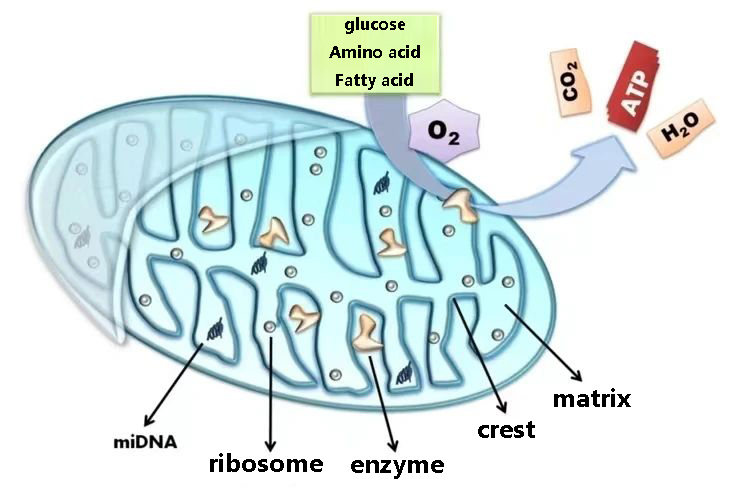
Calliandra B.Harris et al. recruited volunteers and took fruit-flavored drinks containing PQQ.
Through comparative experiments, they found that PQQ supplementation could significantly reduce the levels of plasma C-reactive protein, IL-6 and urine methylamine (such as trimethylamine n-oxide) and other inflammatory factors.
It also increased the expression of metabolites corresponding to the enhancement of mitochondrial activity function in urine, indicating that PQQ does have anti-inflammatory and enhancement of mitochondrial activity in human body.
PQQ regulates blood lipids and prevents cardiovascular diseases
PQQ has been shown to prevent mitochondrial dysfunction caused by cardiac stress overload and improve heart remodeling and cell hypertrophy, thereby avoiding the development of chronic heart failure (CHF).
PQQ also prevents PGC-1α and downregulates mitochondrial transcription factor A (TFAM) produced by aortic arch constriction (TAC) or angiotensin II, and inhibits mitochondrial morphological damage.
Taking PQQ may improve heart function, reduce myocardial infarct size, and reduce cardiac hypertrophy by reducing isoproterenol induced cardiac hypertrophy.
PQQ is also expected to counteract the adverse effects of atorvastatin (ATS), mitigate its harmful effects, and enhance metabolic outcomes.
PQQ protects neurons and improves brain function
Neurons are vulnerable to fatal damage caused by oxidative stress, and the death of this neuron is thought to be one of the important causes of neurodegenerative diseases such as Alzheimer’s and Parkinson’s disease.
PQQ is able to protect the nervous system from damage by reducing oxidative stress and promoting mitochondrial function, effectively preventing neurodegeneration caused by oxidative stress, and its effect is independent of the interaction of other antioxidants.
Studies have shown that PQQ can be used as a new type of drug to treat anti-neurodegenerative diseases.
Nerve growth factor (NGF), a protein composed of 118 amino acid residues, is a well-known neurotrophic factor required for the development and maintenance of peripheral sympathetic and sensory neurons.
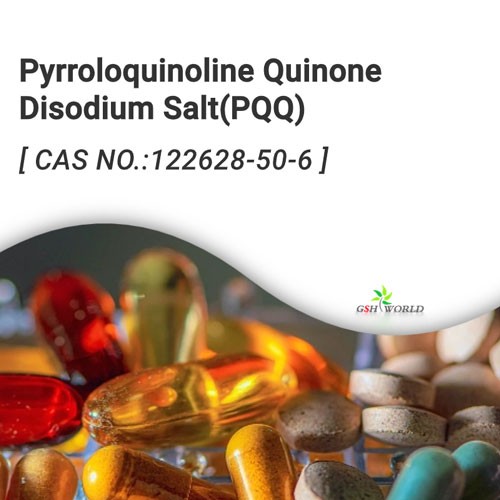
PQQ has a stimulating effect on NGF synthesis/secretion in astrocytes and fibroblasts, thereby enhancing NGF production without cytotoxicity.
PQQ has potential benefits for improving memory, learning ability, and cognitive function.
A Japanese study showed that for young adults aged 20 to 40 years, PQQ showed improvement in cognitive function after 8 weeks, including improvements in cognitive flexibility, processing speed, and executive speed.
Older adults aged 41 to 65 showed improvements in complex and verbal memory after 12 weeks.
The researchers said that when the mitochondria of the nervous system synthesize energy, they produce free radicals, and too many free radicals can accelerate the aging of the brain.
PQQ can also help remove free radicals, protect and repair damaged mitochondria, and promote the formation of new mitochondria.
PQQ protects cells and slows aging
Hiroyuky Sasakura et al. [Researchers published an article on the efficacy of PQQ in the authoritative journal of Cell Science in 2017, and experimentally proved that PQQ can mobilize the antioxidant longevity signal and significantly extend the life of C. elegans by inducing the expression of oxidative stress system through low concentration of hydrogen peroxide.
And the higher the concentration of PQQ, the better the life prolonging effect, the number of high-survival experimental group is twice as high as the control group.
At present, a number of studies have confirmed that PQQ can protect cells by activating “longevity proteins” such as SIRT1, SIRT3 and SIRT6.
In 2015, Zhang et al. published an article in Nutr Res journal stating:
Through the HEP-G2 model of liver cancer cells, PQQ can activate SIRT1 and SIRT3, which is also the earliest study in the industry to prove the relationship between PQQ and sirtuins.
Sum up
With its unique physiological mechanism, PQQ has become a super potent antioxidant, which plays an important role in improving energy metabolism, protecting the nervous system, enhancing cognitive ability, anti-aging, enhancing immunity, relieving inflammation, protecting cardiovascular and promoting overall health.
At present, PQQ supplementation in the form of dietary supplement or nutritional supplement has been accepted by more and more people, and its effect has been verified by more and more users. In addition, PQQ safety issues have been certified by national authorities.


